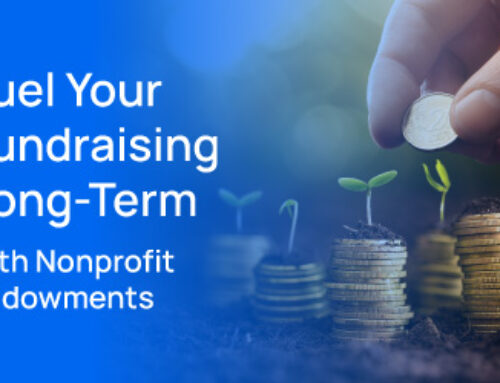 Should you print, stuff, and mail your own fundraising letter? If you have fewer than 200 mail recipients, the answer is probably yes.
Should you print, stuff, and mail your own fundraising letter? If you have fewer than 200 mail recipients, the answer is probably yes.
When you get more than 200 donors, you may be eligible to mail at nonprofit postage rates as low as 19 cents per piece (as of July 2023). Of course, USPS makes you jump through hoops for that discount. That’s why nonprofits outsource to nonprofit mail experts as their donor file grows.
But for now, you’ll do your appeal in-house and use the first-class Forever Stamp. The bad news is that you’ll pay 66 cents per letter for postage. The good news is that USPS will send your mail the fastest — a blessing in the crowded holiday mailbox.
Below are my 5 top tips to save you precious money and time when preparing your own appeal.
1. Start With an Effective Format
It always makes me sad when I see a small nonprofit send a routine mailing with the butterfly stamp. That means they chose a format that couldn’t be run through USPS’s machines — and paid more than a dollar in postage per piece!
Nonmachinable mail includes envelopes that:
- Are square
- Can’t bend easily
- Contain items that make the mail piece uneven
- Have a vertical setup
Once in a while, there’s a good reason to do an odd mailing like that. But for your bread-and-butter appeal letter, I recommend a 3-piece package that includes:
- A 2-page letter on legal paper with a perforated reply slip. The letter should be personalized with each donor’s name and ask amounts calculated according to their unique giving history
- Outer window envelope with tease text, logo, and return address
- Pre-addressed reply envelope with a code to track the mailing.
This letter puts all donor information on one sheet of paper. No labels needed! That simplifies mail merges and you won’t have to match letters to the right envelopes.
2. Obtain Supplies Early
Don’t wait until the last minute to buy supplies for your in-house mailing. Give yourself plenty of time to find the best deals — and to recover if the order is wrong or your package gets delayed.
You’ll need to source:
- 5” x 14” legal paper with a perforation 3.5” from the bottom. Your local printer can perforate for you, too.
- Extra ink/toner. Buy 25% more than you think you need.
- #10 white wove window envelope with self-sealing closure. No one wants to lick or moisten 200 gummed envelopes.
- #9 white wove plain envelopes with gummed closure. The donor can handle one lick!
- First-class stamps. Visit the USPS store to choose a design that matches your mission.
3. Optimize Your Design

Your design doesn’t need to be fancy. In fact, simple works best for most appeal letters.
At a minimum, make sure your designer:
- Uses 1-inch margins and 14-point type in the body text. This will ensure it’s readable by older donors.
- Puts color on the front of the letter and grayscale on the back to save money.
- Includes variable data (e.g. personalized salutation and ask amounts) only on the front of your letter.
- Uses USPS address placement standards and ensures your letter set complies with the tap test. That ensures the donor’s address fits in the window envelope.
- Exports non-variable pieces (envelopes and page 2 of your letter) to press-quality print PDFs.
Canva is a great tool for digital communications, but I don’t recommend designing your print letter there. Why?
First, you’re going to run into trouble with personalization. Canva doesn’t have a native mail merge function to insert names and personalized ask amounts into your letters.
Also, if you do need to outsource your printing, your printer may require press-quality art packages made by professional design software. Canva can’t do that, but Adobe InDesign can.
You can find discounted licenses for InDesign on sites like TechSoup. And there are plenty of online resources that can teach you the basics.
4. Get the Data Right
You can write the most amazing appeal and it won’t perform if your data is a mess. The golden rule in data is to make sure you get your donor’s name right. It’s the first thing the donor looks at … and if it’s not right, it may be the last thing they read!
Follow these tips to get your data fit for mail:
- Decide who you’re mailing to early. I recommend starting with donors who were active in the last 3 years. Then adjust the quantity to match your budget.
- Export a .CSV or Excel report from your donor management system with at least the following fields:
- Account #
- Account name
- First/last of head of household or primary contact
- Secondary contacts
- Envelope name
- Informal greeting
- Mailing address
- Last gift date
- Last gift amount
- Open your report in Excel or Google Sheets and correct any donor information that you haven’t had time to fix in the database. Look for things like donors who recently died or divorced. Or a donor who prefers J.C. to Juan Carlos. Then reimport the list to your system to save those changes for good!
- Calculate personalized gift strings based on the donor’s last gift amount. You don’t want to ask a donor who can give $500 for $50 or vice versa.
- Add yourself and a few staff or board members as “seeds.” That’ll ensure you get a copy of the final appeal and have a rough idea when donors receive it.
- Rename columns to match the variables in your design, as needed.
- Save the file in its original format and in the format your design software requires for mail merge. That’s often .CSV.
Consider running your list against the Coding Accuracy Support System (CASS) and National Change of Address (NCOA) databases. It’s not required for letters with first-class stamps, but you’ll likely save money by identifying undeliverable mail pieces before you pay to print and mail them.
CASS and NCOA checks may already be included in your donor database or as an extra service. If not, you can find a data processor online.
5. Streamline Production & Assembly
It’s the moment you’ve been waiting for: the printing and stuffing party. Organization is key to making this time productive and stress-free. Follow these tips to keep your mini mail factory humming:
- Merge your distribution list with page one of your letter. Save both the source and merged files. Export the merged file to a high-quality PDF.
- Test 1 printout of each item, then 10-25 before sending 100s through. You’ll catch any errors before they’re too costly to correct.
- If you have multiple printers, divide and conquer with an eye toward each machine’s speed, ink/toner cost, and capabilities. For example, send black and white response envelopes and page 2 through a B&W laser printer. Then flip the letter and run page 1 through a color inkjet.
- When you print page 1, remember to conduct the USPS tap test. The address block must be visible in the envelope window in all positions to get delivered. Note where the letter should be folded.
- Use a gridded craft cutting mat as a useful gauge on where to fold the letters. A credit card or ruler can help you crease the folds.
- Do each assembly step one at a time. Fold all the letters, then stuff envelopes, then seal, then stamp.
- Drop your letters at the nearest post box or let your carrier pick them up. Then go out and celebrate a job well done!
The Bottom Line
Mail is a powerful tool to motivate your donors. It’s more personal than email and it lets donors choose how they want to give — by check or online. That’s especially helpful at year-end, when some 31% of all annual giving comes in.
If you need to do your own appeal, the secret is to give yourself enough time to manage the details well. You can do this!
As you get more comfortable with the process, you’ll find mail is a vital tool to touch donors’ hearts, upgrade their giving, and create even more change in your community.
About the Author
Brianna Klink is Chief Operations Officer of Abeja Solutions, a women-owned small business that helps nonprofits master direct mail fundraising. A certified nonprofit professional (CNP) and mail design professional (MDP), Brianna has nearly 20 years of experience in organizational development, multi-media production, and database management. Learn more at abejasolutions.com.






